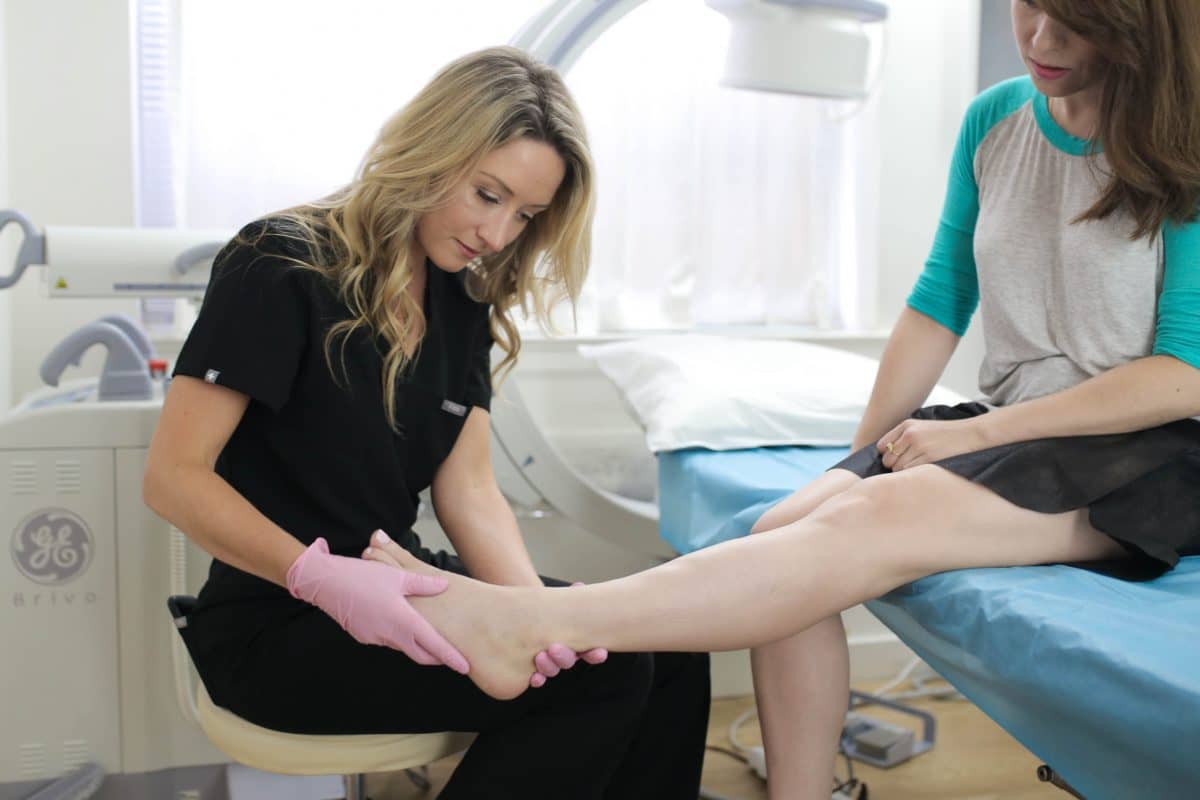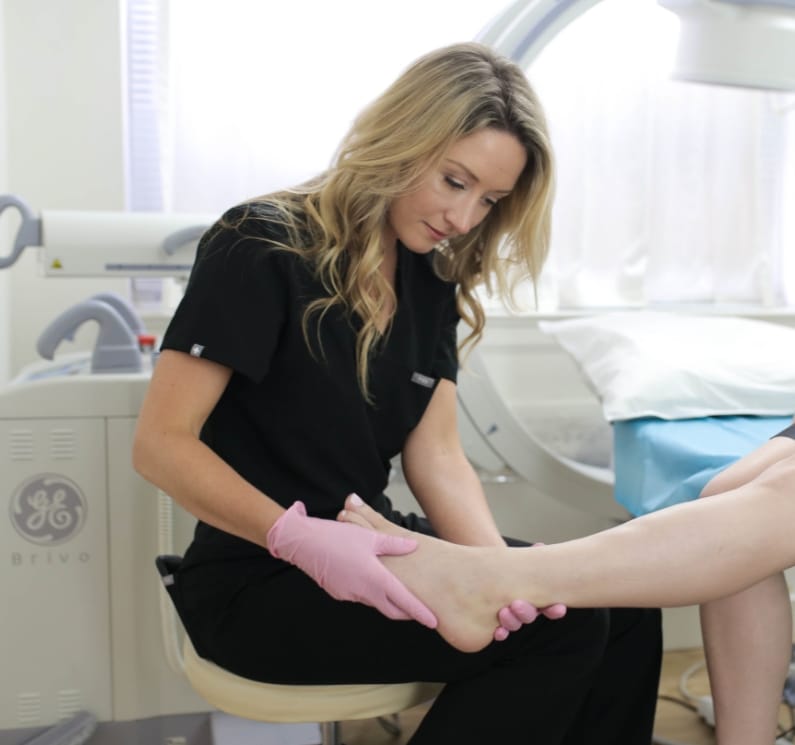Introducing the Spider Vein Center, Suffolk County
The Spider Vein Center in Suffolk County maintains a perfect track record, as evidenced by its 5-star ratings and reviews from patients. Besides a perfect track record, the spider vein center also has exceptional standards of vein care, thanks to an incredibly kind and compassionate vein doctor. The vein center has treated hundreds of patients without major complications, and we minimize the rate of recurrence.
One of our recent patients wrote the following review:
“Dr. Saraf and his staff are fantastic! After years of suffering from varicose veins and feeling uncomfortable, finally, there is a doctor with all the solutions and knowledge! Every staff member always greets you with a smile and a warm, friendly hello! As you get to know the sonogram technicians, Victoria and Leanore, you will soon discover that they are extremely professional and make you feel at ease while they work with you and explain everything. This office is truly the hidden gem of Long Island for a knowledgeable doctor and staff!”

The spider vein center is located at 500 Montauk Highway, West Islip, right on the border of Suffolk County and Nassau County. The vein center is right beside the Bergen Point Golf Course and the Southern Ho Country Club, and a short 5-minute drive from the southern state parkway. The vein center features plenty of parking spaces — you can give us a call at +1 631-212-1456 or schedule an appointment online.
Please continue reading for a step-by-step overview of our minimally invasive spider vein removal process.
Step 1: Initial Consultation
Your spider vein and varicose vein treatment starts with an initial consultation with Dr. Kamran Saraf, our talented vein specialist in Long Island. He discusses your symptoms and asks if you experience leg heaviness, frequent leg cramps, throbbing leg veins, restless leg syndrome, or leg swelling. These are some of the most common side effects of chronic venous insufficiency, one of the most common root causes of spider veins and varicose veins.

After your discussion, the vein doctor also reviews your medical history and examines your legs. They’ll look for other signs of vein disease, such as spider veins, varicose veins, leg ulcers, skin discoloration, or a history of deep vein thrombosis. These problems indicate a high risk of chronic venous insufficiency, a circulatory disorder wherein your vein valves malfunction and blood accumulates in the leg veins. Diagnosing the root cause of your vein problems is essential to ensure long-lasting results with minimal risk of recurrence.
Step 2: Vascular Imaging
After your initial consultation, the spider vein doctor performs vascular imaging with doppler ultrasound. This is an advanced vascular imaging test wherein ultrasound energy is used to visualize the blood flow in your leg veins. Backward blood circulation and accumulated blood in leg veins are conclusive signs of chronic venous insufficiency. After diagnosing vein disease, the vein doctor can curate a minimally invasive spider vein and varicose vein treatment plan.
Step 3: Treatment Planning
Our vein doctors curate comprehensive and personalized vein treatment plans. Most vein centers treat spider veins without addressing the root cause, which increases the risk of recurrence. Furthermore, some vein centers provide minimally invasive treatments without consulting your medical history or insurance coverage options, which can lead to harsh side effects or weigh heavily on your pockets. Our vein doctors curate personalized vein treatment plans according to your medical history, insurance coverage options, diagnosis, symptoms, and overall goals.
Step 4: Primary Vein Treatment
Primary vein treatment is necessary for patients with chronic venous insufficiency. If you don’t have vein disease, the vein doctor can immediately proceed with spider vein removal. During the primary vein treatment, the vein doctor will use multiple techniques to destroy the diseased saphenous vein responsible for your vein problems. Once the diseased vein is neutralized, the accumulated blood freely reroutes into healthier leg veins, thereby restoring effective blood circulation to the heart.
Radiofrequency ablation, laser ablation, venaseal, and clarivein are the best minimally invasive treatments for chronic venous insufficiency. Radiofrequency ablation and laser ablation involve using thermal energy or laser energy channeled via a catheter to destroy the diseased vein. VenaSeal involves injecting a medical adhesive into the diseased vein to seal its walls shut. And clarivein involves damaging the diseased saphenous vein with a combination of mechanical pressure and medicine, channeled via a specialized catheter with a rotating tip.
Step 5: Spider Vein Removal
After the primary vein treatment, the vein doctor proceeds with spider vein removal. Sclerotherapy is the best minimally invasive spider vein removal technique. The vein doctor injects a medicine called sclerosant into the spider veins. Sclerosant fuses the spider veins’ walls, turning them into hardened scar tissues eventually metabolized by the body. The spider veins gradually shrink and fade away from the skin’s surface.
If you have extremely large varicose veins on your skin’s surface, the vein doctor may perform ambulatory phlebectomy, also known as microsurgery. The vein specialist makes small incisions on the skin’s surface and physically extracts the varicose veins. The incision marks turn into scars that gradually fade away from the skin’s surface. This procedure is only used for extremely large, dilated varicose veins.
Step 6: Post-Treatment Recovery
Minimally invasive spider vein and varicose vein treatments conclude within an hour with no downtime. After the treatment, the vein doctor will discuss your post-treatment recovery guidelines, following which you can resume your daily activities and work. However, you’ll have to wear compression stockings for a few days.









